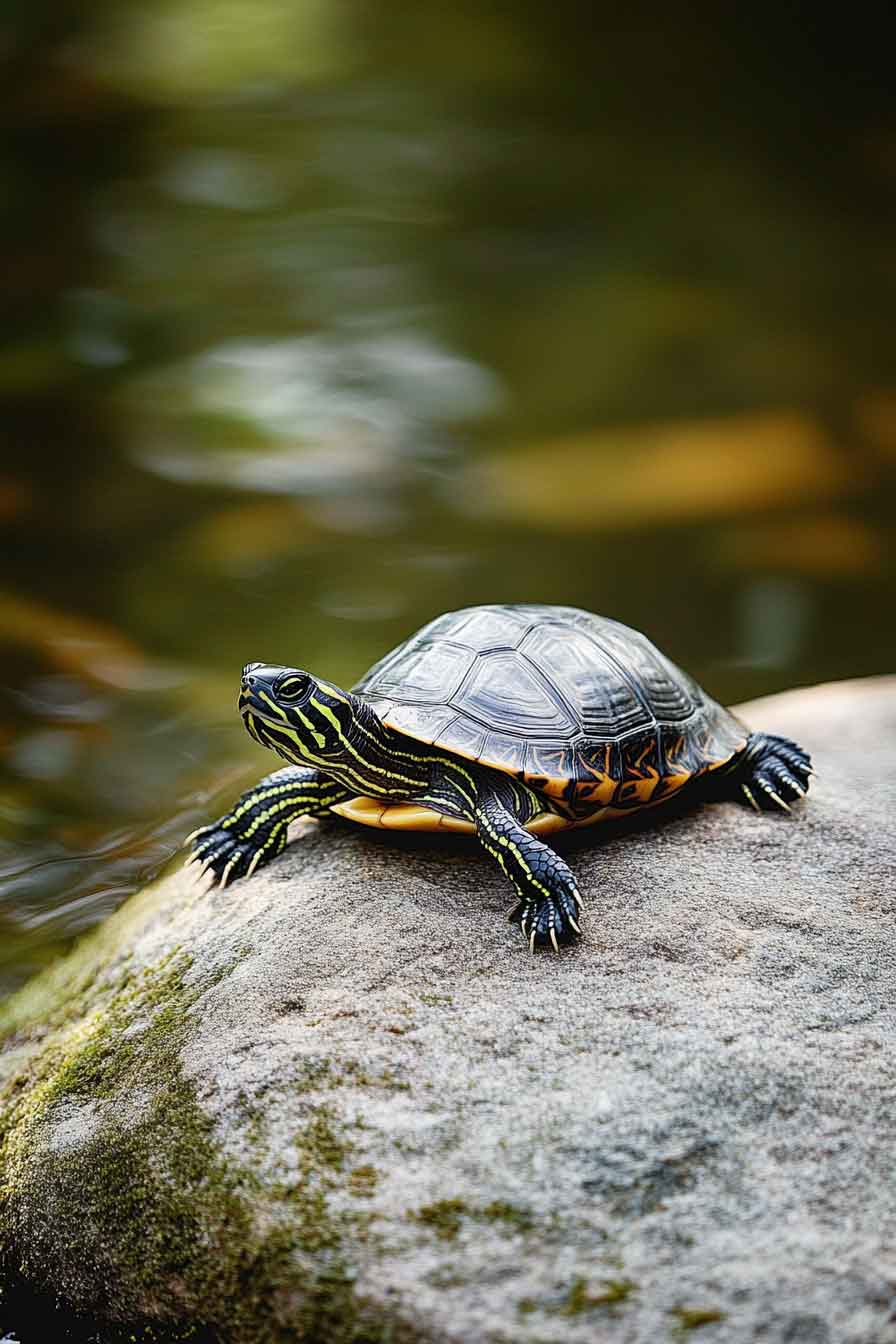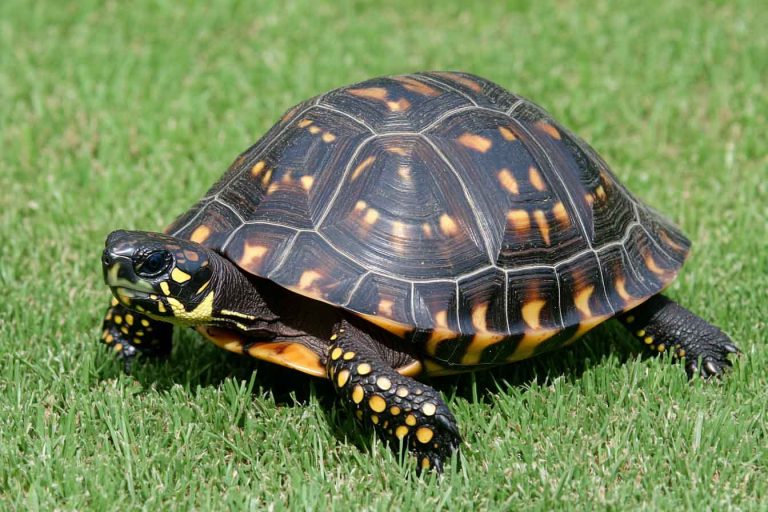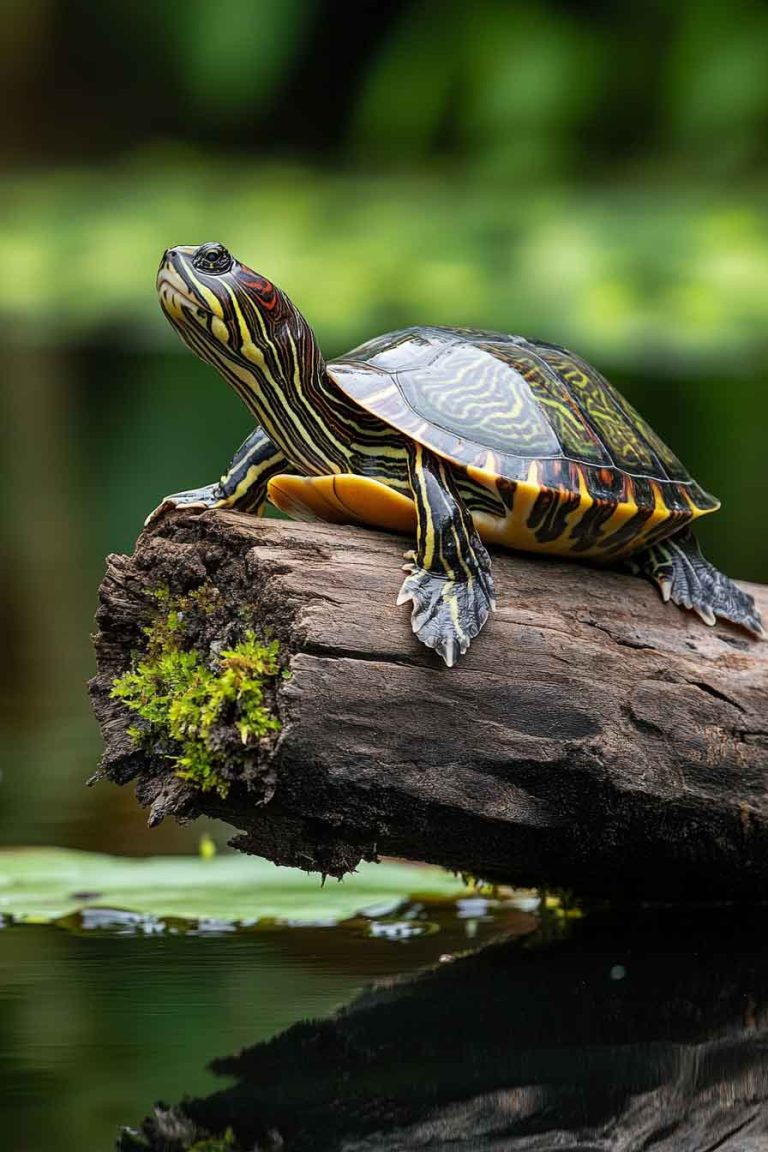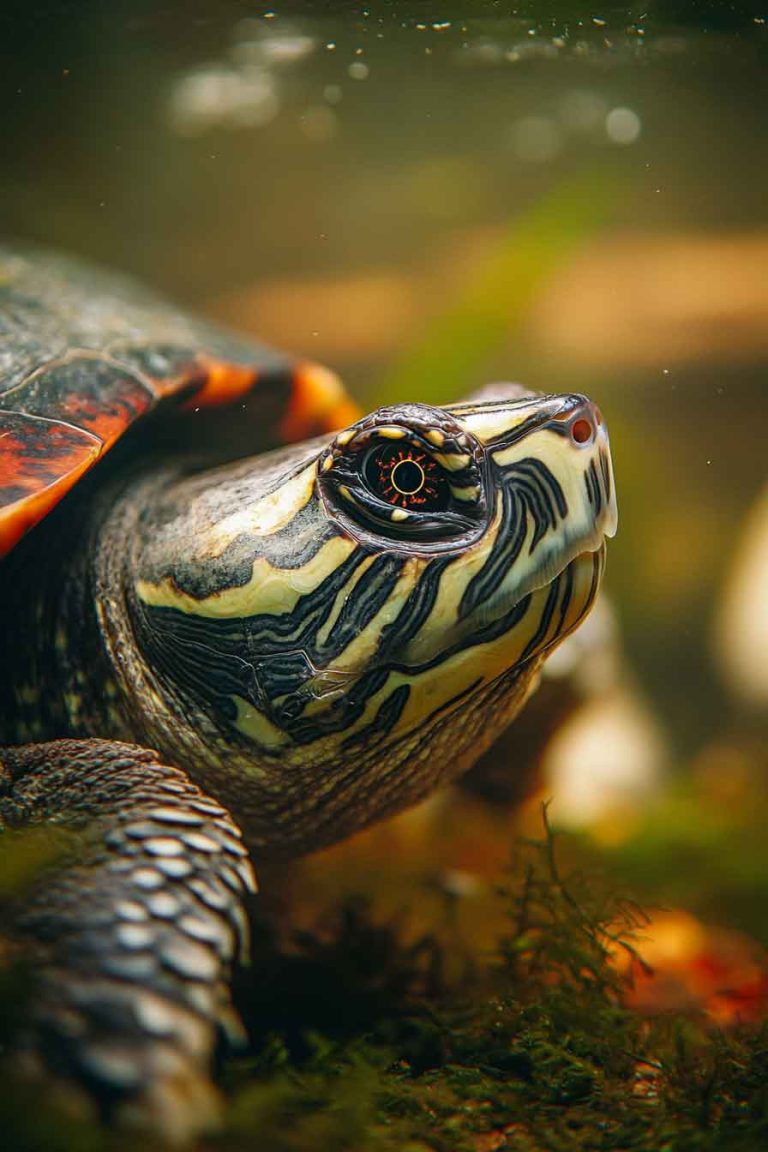Managing Obesity in Pet Turtles: Causes, Signs, and Safe Weight Loss Tips
Ever looked at your turtle and thought, “Hmm… you’re looking a little chubbier than usual”? I’ve been there. When I noticed my own turtle struggling to tuck its limbs into its shell and moving slower than normal, I knew something wasn’t right. Turns out, turtle obesity is a real and growing issue—especially in captive turtles…
Ever looked at your turtle and thought, “Hmm… you’re looking a little chubbier than usual”? I’ve been there. When I noticed my own turtle struggling to tuck its limbs into its shell and moving slower than normal, I knew something wasn’t right. Turns out, turtle obesity is a real and growing issue—especially in captive turtles like ours.
In this article, I’ll break down everything I’ve learned from experience and research. We’ll go deep into how to recognize weight-related problems, what causes them, and the exact steps I took to bring my turtle back to a healthy weight. Whether you’re a new turtle parent or a seasoned keeper, this guide will help you keep your shelled friend healthy and thriving.
Can Turtles Become Overweight?
Yes, turtles can get fat. And unfortunately, it’s more common than most people think—especially with pet turtles who aren’t living in the wild where food is harder to come by and movement is constant.
I used to assume my turtle’s bulky limbs and puffy neck were just a part of growing up. But once I started noticing that it wasn’t pulling into its shell as smoothly or moving with the same agility, I realized I had a problem on my hands. That extra puffiness wasn’t muscle—it was fat.
When a turtle becomes overweight, it stores excess fat in several areas:
- Around the neck
- Along the limbs
- Behind and under the shell
- Even internally around organs
This can lead to a lot of hidden dangers—ones I didn’t realize at first.
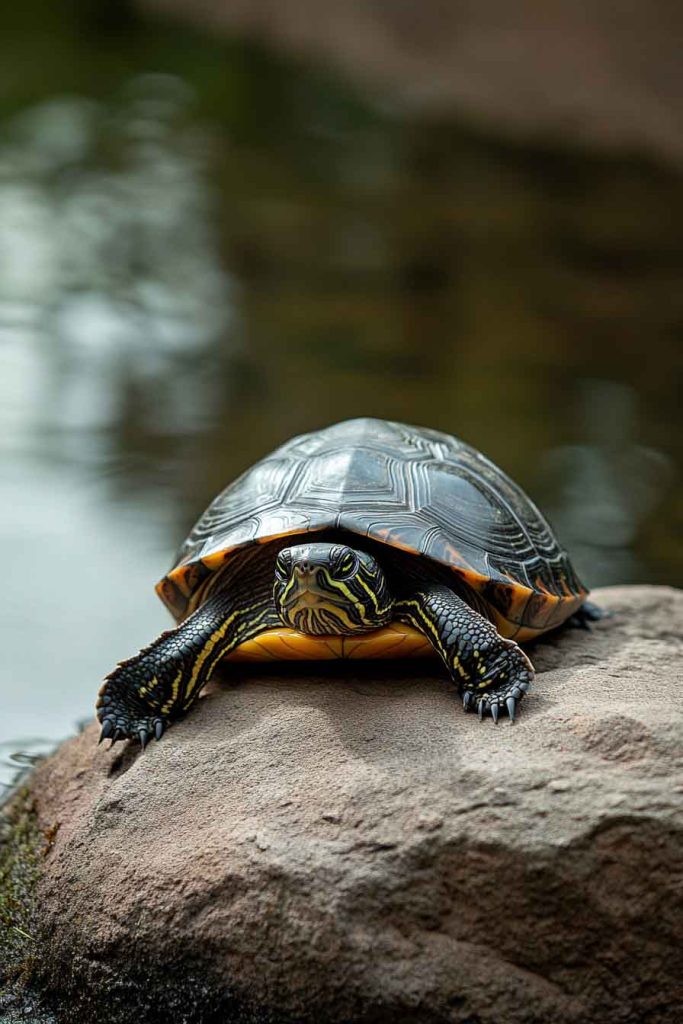
Health Risks of Turtle Obesity
Just like with us humans, being overweight can seriously impact a turtle’s quality of life. It’s not just about appearances—obesity in turtles can cause long-term damage if ignored.
Here are the issues I’ve seen firsthand or learned about through vets and other experienced keepers:
- Fatty liver disease: Turtles store fat in their liver, and when it builds up too much, the liver can become enlarged and dysfunctional. It can even lead to death in severe cases.
- Mobility issues: Overweight turtles tend to move less, which creates a cycle of inactivity that only worsens the problem.
- Inability to retract into their shell: This is a huge red flag. A turtle that can’t protect itself is a stressed turtle.
- Joint strain: That extra weight puts a surprising amount of pressure on a turtle’s small joints and limbs.
- Organ stress: The heart and lungs have to work harder, and that can lead to respiratory issues or early fatigue.
- Breeding problems: If you’re keeping turtles for breeding purposes, obesity can lower fertility and increase complications.
And trust me—once these problems start showing up, it takes time and effort to reverse them.
What Causes Obesity in Turtles?
Now, you might be asking: “How did this even happen?” That’s what I wondered, too.
Here are the most common causes of weight gain in turtles—most of which I’ve had to correct in my own care routine:
1. Overfeeding
This one’s a biggie. Turtles are opportunistic feeders. That means they’ll eat almost every time you offer food—even if they’re not hungry. I was feeding my turtle daily like clockwork, not realizing that its metabolism is way slower than mine.
Plus, too many protein-heavy foods like insects, shrimp, and commercial pellets can quickly add up in calories. Overfeeding—even with “healthy” food—is the fastest way to make your turtle overweight.
2. Lack of Exercise
In the wild, turtles are active. They swim, walk, dig, and climb all day. But in a tank or small enclosure, they don’t have those same opportunities. I realized my turtle barely moved because its tank was too small and boring.
3. Poor Tank Setup
No basking spots? Dim lighting? Cold water? These all slow down a turtle’s metabolism. Without proper UVB lighting and heat, a turtle will stop moving much, digest food inefficiently, and start storing more fat.
4. Wrong Diet Composition
Too much protein, not enough vegetables. Too many fatty treats like mealworms or chicken. I made the mistake of relying too much on commercial pellets, thinking they were “balanced,” but didn’t realize that they’re often packed with calories.
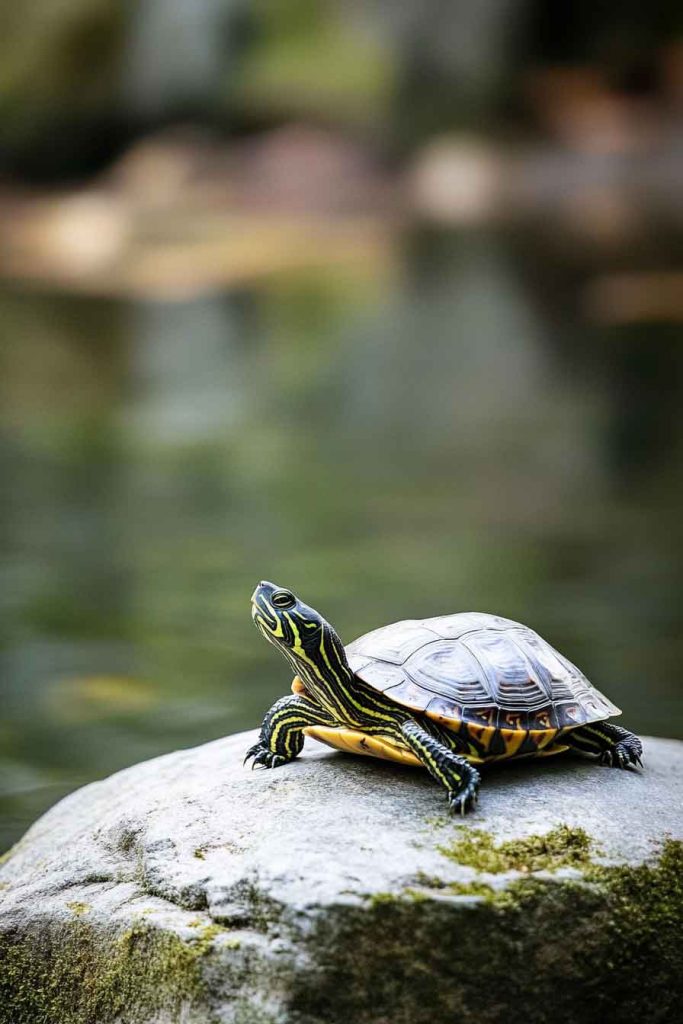
How To Tell If Your Turtle Is Overweight
So, how do you actually know if your turtle is obese? It’s not always easy, especially with that hard shell hiding a lot. But over time, I learned to spot the signs—and once you know what to look for, they’re pretty obvious.
Here are the main indicators I personally noticed and what you should keep an eye on too:
1. Excess Flesh Around the Limbs and Neck
This is the most visible sign. When your turtle pulls its legs or head into its shell, do you see soft, bulging skin pushing out? That puffiness is excess fat. In a healthy turtle, the skin should be snug and smooth—not squishy.
2. Difficulty Retracting Into the Shell
If your turtle can’t fully tuck in its legs or head, it’s not just a safety concern—it’s also a sign that something’s off. A healthy turtle should easily be able to retract when startled.
3. Sluggish Movement
Obese turtles tend to be slower and less active. I noticed my turtle stopped exploring its tank and spent way more time basking or just lying still. That’s often a sign of joint pressure or energy imbalance from extra weight.
4. Overgrown Fat Pads
For some species, you’ll even see noticeable bulges right behind the limbs or under the chin. These are fat deposits, and they can get surprisingly large.
5. Weighing the Turtle
If you have access to a kitchen scale and know the healthy weight range for your species, weigh-ins can help. I started tracking my turtle’s weight monthly, and seeing the upward trend was a wake-up call.
How I Helped My Turtle Lose Weight (Safely)
Once I accepted that my turtle was overweight, I knew I had to make some changes. But I also wanted to avoid stressing it out or causing any other health issues by doing things too quickly. Here’s the routine I followed, step by step.
1. Reduced Feeding Frequency
The first thing I did was cut back on how often I was feeding. Instead of daily meals, I switched to feeding every other day—or even every third day for adult turtles. Juveniles still need more frequent meals, but adults don’t.
I also made portion sizes smaller. No more handfuls of pellets. Just a few pieces of food—enough to be finished in 3–5 minutes.
2. Added More Leafy Greens
I shifted the diet toward low-calorie, high-fiber greens like:
- Romaine lettuce
- Collard greens
- Dandelion greens
- Red leaf lettuce
Turtles love crunch, and these give it to them without the calories of protein-heavy foods.
3. Rebalanced the Diet
I made sure the food breakdown looked more like this:
- 50% vegetables and greens
- 25% aquatic plants (for water turtles)
- 15% high-quality pellets
- 10% protein (worms, insects, boiled egg whites, etc.)
This made a huge difference in both weight and energy levels.
4. Encouraged More Activity
This was a game-changer. I expanded the tank space and added more things to explore—driftwood, rocks, platforms. For land turtles, I gave them safe outdoor time in a turtle pen.
Sometimes, I even created “feeding mazes” by spreading pieces of greens across the tank so my turtle had to walk to get its food. Sounds silly, but it works.
5. Improved the Lighting and Temperature
Cold turtles are lazy turtles. I checked my basking temps (around 90–95°F) and made sure the UVB light was actually doing its job. A warm, well-lit environment stimulates digestion and encourages movement.
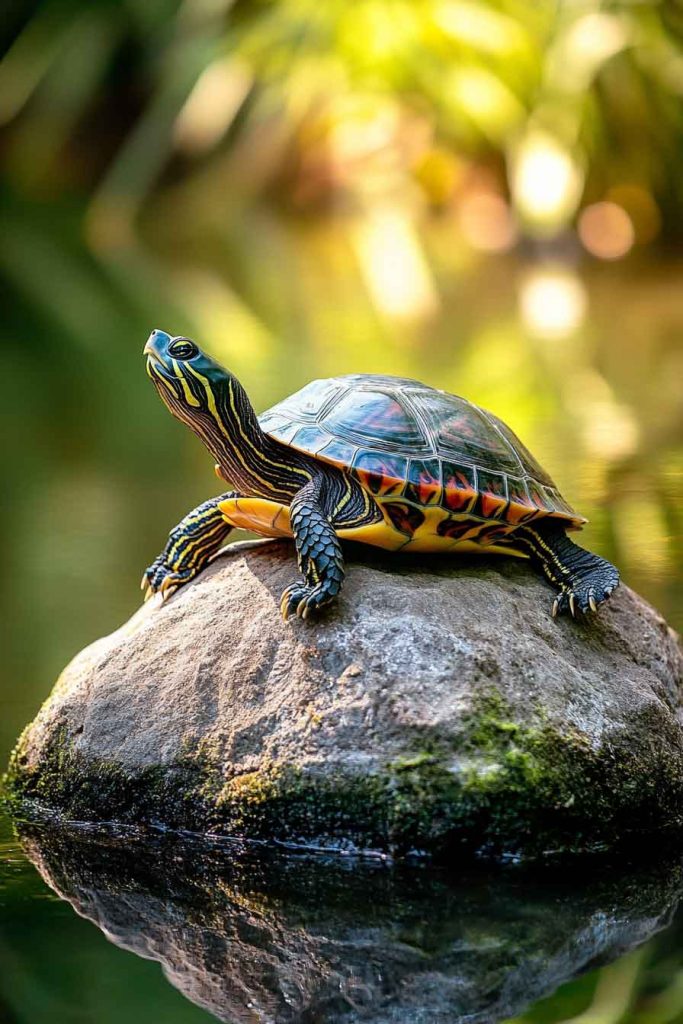
How To Prevent Obesity in Turtles Long-Term
After helping my turtle shed the extra weight, I realized that the real work is in the maintenance. Prevention is way easier than treatment, and it just takes a few consistent habits.
Here’s what I’ve stuck with to keep my turtle healthy and active:
1. Stick to a Feeding Schedule
Adult turtles don’t need daily feeding. I now feed mine every 2–3 days, and I watch portion sizes closely. If there’s leftover food after 10 minutes, it was too much.
For younger turtles, I feed once a day—but with the same focus on balance.
2. Offer Variety, Not Junk
I rotate between fresh leafy greens, veggies, aquatic plants, and quality pellets. I treat high-protein items like bugs or shrimp as treats, not staples.
Also, no people food. That includes bread, cheese, or fatty meat. I learned that the hard way when my turtle got sluggish after nibbling on a dropped piece of sausage.
3. Keep Them Moving
Make your turtle work for its food when possible. Rearranging the tank regularly helps stimulate exploration, and outdoor time (if safe) gets them moving even more.
Tortoises, for example, love to roam. So, a secure yard setup can double as exercise time.
4. Optimize the Habitat
Proper basking temperatures (usually 85–95°F depending on the species) and strong UVB lighting help boost metabolism and digestion. I check my setup monthly and replace UVB bulbs every 6–12 months like clockwork.
Species-Specific Notes
Not all turtles store fat the same way, so here’s a quick rundown of some differences I’ve noticed across species:
- Red-eared sliders: Very prone to overeating, especially with pellets and protein.
- Box turtles: Can get fat fast on too many worms or fruit. Keep fruit to a minimum.
- Russian tortoises: Naturally stocky, but excess fat still shows in the limbs and chin.
- Snapping turtles: Grow fast and love meat, but need careful portioning in captivity.
Always check the care guide specific to your species—because what’s healthy for one might not be for another.
FAQ: Common Questions About Turtle Weight Issues
1. Is it bad if my turtle eats every time I feed it?
Not necessarily—but it’s a sign you might be feeding too often. Turtles are opportunistic eaters, so they don’t always stop when full. If they’re gobbling up everything in seconds, try feeding smaller, more controlled portions.
2. Can I just let my turtle “fast” to lose weight?
I wouldn’t recommend it. Instead of skipping meals completely, just reduce frequency and portions. Turtles still need consistent nutrition to stay healthy—starving them is risky and can lead to organ stress.
3. My turtle won’t eat veggies—what do I do?
Been there. It takes time. I started by mixing small bits of greens with pellets, gradually increasing the greens and decreasing the pellets. Eventually, my turtle started recognizing them as food.
4. Is walking around my house good exercise for my turtle?
It can be—for box turtles or tortoises. But be careful with slippery floors, furniture gaps, or anything your turtle could get stuck in. Supervised floor time in a turtle-safe room works best.
Final Thoughts
Obesity in turtles is more common than most of us realize—but the good news? It’s completely manageable. I’ve brought my own turtle back from the edge of serious health issues just by adjusting food, upgrading the habitat, and being a bit more mindful day to day.
If your turtle is looking a little too “well-fed,” don’t panic. Just start with small changes. And remember—every turtle is different, so what works for mine might need tweaking for yours.
Your turtle’s health is in your hands—and with the right approach, you can absolutely turn things around.
Want to learn more about turtle nutrition or tank setup? Check out my other care guides—I’ve documented everything I’ve learned over the years so you don’t have to figure it all out the hard way.

